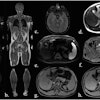
PET quantification based on standardized uptake values (SUV) can be hampered by variability in imaging procedures between institutes participating in multicenter FDG PET/CT trials. To address the issue, researchers in the Netherlands have evaluated harmonization strategies that reduce SUV variability across such institutes.
The results are now being used to address issues that occur while using nonpure positron emitters such as zirconium-89 (Zr-89) within a multicenter PET/CT trial setting (European Journal of Nuclear Medicine and Molecular Imaging 11 June 2013). The researchers have focused on one strategy:
"The purpose of our present study was to compare different scanner validation procedures for their ability to detect differences in quantitative image characteristics," said Nikolaos Makris from the VU University Medical Center in Amsterdam. "We found that VOI3Dpeak was the least sensitive volume-of-interest (VOI) definition in its ability to pick up differences in image characteristics, and may be an attractive method in multicenter FDG PET/CT studies."
Harmonization across sites
During multicenter trials, a harmonization approach is essential to ensure quantitative comparable data (such as SUVs) between institutes. However, even after a harmonization procedure is in place, residual differences in SUV might be present. That being the case, the team wanted to explore which VOI method (or methods) could be employed to further reduce differences in SUV between imaging centers.
They examined three phantoms: the European Association of Nuclear Medicine/National Electrical Manufacturers Association (NEMA) NU2 image quality phantom, the American College of Radiology (ACR) phantom, and the of Nuclear Medicine Clinical Trials Network (SNM-CTN) anthropomorphic thorax phantom. In addition, data from 10 randomly selected patients diagnosed with esophageal, lung, and colorectal cancer, as well as lymphoma were considered. In all cases, phantom and patient data were collected using a Gemini TF PET/CT scanner.
The data were then reconstructed using a line-of-response ordered-subsets expectation maximization method. Then, to simulate the variability in image quality and resolution seen in a multicenter setting, additional reconstructions were performed while the number of iterations, number of subsets, and time-of-flight kernel width were changed.
"By varying the reconstruction settings, we were able to acquire images with different characteristics and simulate, to some extent, SUV variability without the added complexity of inter-patient variability," Makris commented. "The subsequent use of different VOI definition methods gave us the opportunity to investigate which of those methods can reduce SUV variability between institutes."
Data analysis
Makris and his colleagues applied VOImax, VOI3Dpeak, and VOIA50% to assess the impact of changes in image reconstruction settings on SUV and reconstruction coefficients. "VOI3Dpeak was the least sensitive VOI definition in its ability to pickup differences in image characteristics," Makris noted. "This leads us to believe that VOI3Dpeak might be an attractive method in multicenter FDG PET/CT studies. However, care should be taken for spheres/tumors with volumes smaller than 1 ml."
The group also noted that all three phantoms can be used to harmonize parameters for data acquisition, processing, and analysis. "However, the SNM-CTN and NEMA phantoms are most sensitive to parameter changes and are suitable for harmonizing SUV quantification based on 3D VOIs," Makris added.
Work is now ongoing to address the issues that are present while using nonpure positron emitters such as 89Zr or Iodine-124 (I-124) within a multicenter PET/CT trial. "In the case of 89Zr, which is used in immuno-PET, issues such as low count rate due to low injected activity and positron abundance may affect the performance of the reconstruction algorithm, therefore producing quantitatively incorrect images," Makris explained.
© IOP Publishing Limited. Republished with permission from medicalphysicsweb, a community website covering fundamental research and emerging technologies in medical imaging and radiation therapy.



















